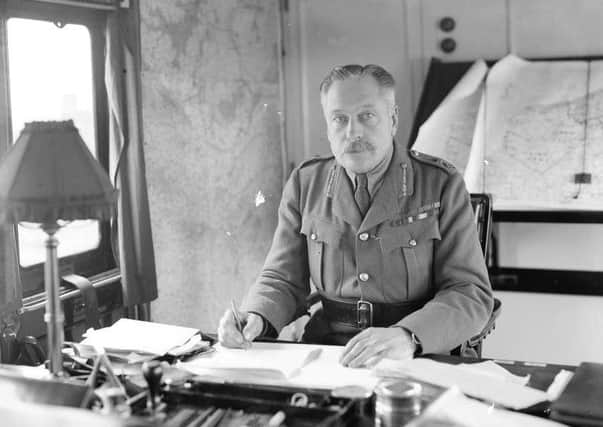'˜I'm not just remembering the Somme because it's their tradition, I'm remembering John Doherty as well'


Even though he was reared in a republican family very much opposed to British rule in Ireland, John Doherty, as a young man, joined the British Army.
John was killed at Loos. His name is inscribed upon the Cenotaph in the Diamond.
Advertisement
Advertisement
For more than twenty years now, I have been involved in community relations work.
Three years ago I was working with a group of loyalists. We were sharing our thoughts about the Battle of the Somme and the 1916 Rising. One of the group members, a loyalist ex-prisoner, told me that he was going to visit the Somme the following year. When he invited me to come along, I accepted the invitation. Later that same week I was over in my father’s house chatting.
I told him that I was going to visit the Somme. He was half reading the newspaper. He looked over the top of the paper and told me, for the first time, that my great-great uncle, John Doherty had gone to fight in the First World War and had been killed.
He told me that when the telegram came in January 1916 to tell the family that John Doherty had been killed, his father, Manasses Doherty burned the telegram and expressly forbid the family ever to mention John again.
Advertisement
Advertisement
My father had never spoken about John Doherty to me until that moment. That night, we had a long conversation about our family’s history, about republicanism and about how strongly our family opposed the British presence in Ireland.
My father’s understanding was that, when John Redmond had called for Irish Nationalists to volunteer for the British Army and fight for “the freedom of small nations.”
John Doherty had heeded this call and enlisted. To my father, John Doherty was a Redmondite. With the help of local historian Trevor Temple, I discovered that John Doherty served with the Royal Irish Regiment and was with the Sixth Battalion. Apparently he enlisted at Temple-more, ‘within the city and county of Londonderry.’
My hunch is that he joined up thinking that if Britain won the war, then Ireland would become free. Within my family circle, even joining ‘Redmond’s army’ was still joining the British Army. Here was a young man making that choice and here was his family, particularly his own father, making a decision to disown him.
Advertisement
Advertisement
The Easter Rising in April 1916 and the subsequent execution of the leaders of the Rising reinforced Irish hostility against the British at that time. I had never heard mention of John Doherty until that evening in my father’s house.
The process of re-discovering and accepting John Doherty had begun and I struggled to understand how Manasses Doherty could have been so cold as to disown his own flesh and blood. It is possible though that he was expressing his own grief when he destroyed that telegram.
Manasses died only a few months later John in April 1916.
I had already decided I was going to the Somme when I had this conversation with my father. On that journey, a loyalist ex-combatant, Raymond Millar and a PSNI officer found the panel where John Doherty is commemorated. I can remember Raymond running in front of me down the side of the graveyard and excitedly shouting to bring me up to it.
John Doherty’s name is one of many names on the panel. There is no grave. John was blown up at Loos. His body was never recovered.
Advertisement
Advertisement
Being there, I thought that I was, in all likelihood, the first person in my family circle ever to stand before that panel, to connect with that young man who died in January 1916. When I came out of the graveyard, the sun was going down.
I looked across at the mountains, the coalfields and the flattened plain where the battle had taken place, I felt an amazing sense of stillness and quietness. All this has been a journey of understanding and healing for me. Originally, I had learned about the First World War through reading and viewing DVDs. The story of John Doherty’s life and death and then actually visiting the battlefields, the Memorials and the graveyards, all of these have created a new awareness.
When I became director of the Peace and Reconciliation Group, part of the group’s tradition was to lay a wreath at the Cenotaph on Armistice Day.
In the beginning I struggled with this. I asked myself: ‘What would my father say, what would my Republican family say about me if I was seen wearing a poppy and carrying a wreath down to the Cenotaph? Would they think I was a traitor?’
Advertisement
Advertisement
At the end of the day I had to make my own decision about what I was going to do. This is part of the struggle we are in at this time in Northern Ireland. How do we express who we are? After I had learned about my uncle and after I had gone to the Somme, I now lay a wreath at the Cenotaph, with meaning. Not just for the Peace and Reconciliation Group because it’s their tradition.
I’m doing it for John Doherty as well. I’m now very much at peace when I walk on Remembrance Sunday. Ironically I now go to the Cenotaph twice as there is another service on the Saturday evening, the weekend previous to Remembrance Sunday.
The organisation of Irish Ex-Servicemen and the British Legion have a joint remembrance ceremony. I go to that as a citizen of this city,but I don’t carry a wreath. The Royal British Legion carry the Union lag and the organisation of Irish Ex-Servicemen carry the Irish Tricolour.